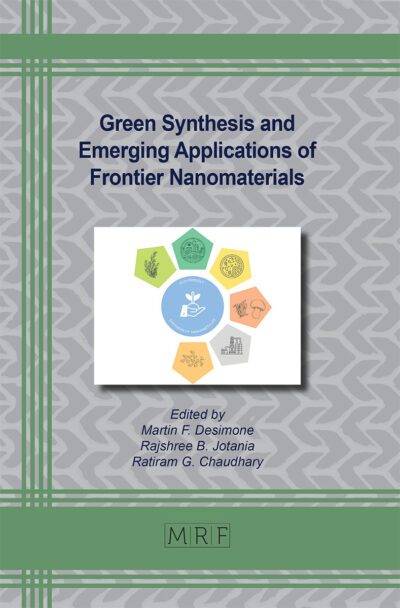Plasma-Induced Generation of Optically Active Defects in Glasses
Christoph Gerhard
Abstract. In this contribution, the modification of optical and electrical properties of glasses by plasma treatment is introduced. The presented method is based on pulsed dielectric barrier discharge plasmas which are operated with hydrogenous working gases where atomic and excited hydrogen species are generated within the plasma by electron impact-induced dissociation. These species initiate a notable modification of the glass network. As a result, the transmission characteristics and associated parameters of plasma treated glass are altered. The impact of plasma treatment on the chemical composition of optical glasses as well as the accompanying changes in optical properties are presented. As determined via secondary ion mass spectroscopy, oxygen is removed and hydrogen is implanted into the glass bulk material. This leads to the formation of oxygen vacancies such as E’-centers on the one hand and the generation of hydrogen centers on the other hand. Such glass modifications lead to a drastic increase in absorption and index of refraction as ascertained via UV/VIS-spectroscopy. Some potential applications of these plasma-induced effects are suggested.
Keywords
Glasses, Plasma Treatment, Glass Defects, Optical Properties
Published online 2/25/2020, 8 pages
Citation: Christoph Gerhard, Plasma-Induced Generation of Optically Active Defects in Glasses, Materials Research Proceedings, Vol. 16, pp 38-45, 2020
DOI: https://doi.org/10.21741/9781644900710-5
Part of the book on Photonics and Photoactive Materials
References
[1] M. Oikawa, K. Iga, T. Sanada, N. Yamamoto, K. Nishizawa, Array of distributed-index planar micro-lenses prepared from ion exchange technique, Jap. J. Appl. Phys. 20 (1981) L296-298. https://doi.org/10.1143/JJAP.20.L296
[2] J. Qiu, X. Jiang, C. Zhu, H. Inouye, J. Si, K. Hirao, Optical properties of structurally modified glasses doped with gold ions, Opt. Lett. 29 (2004) 370-372. https://doi.org/10.1364/OL.29.000370
[3] A. Zoubir, C. Rivero, R. Grodsky, K. Richardson, M. Richardson, T. Cardinal, M. Couzi, Laser-induced defects in fused silica by femtosecond IR irradiation, Phys. Rev. B 73 (2006) 224117. https://doi.org/10.1103/PhysRevB.73.224117
[4] N. Jiang, J. Qiu, A.L. Gaeta, J. Silcox, Nanoscale modification of optical properties in Ge-doped SiO2 glass by electron-beam irradiation, Appl. Phys. Lett. 80 (2002) 2005-2007. https://doi.org/10.1063/1.1454211
[5] M. Frank, M. Kufner, S. Kufner, M. Testorf, Microlenses in polymethyl methacrylate with high relative aperture, Appl. Opt. 30 (1991) 2666-2667. https://doi.org/10.1364/AO.30.002666
[6] C. Gerhard, Optics Manufacturing: Components and Systems, 1rst ed., CRC Taylor & Francis, Boca Raton, 2017. https://doi.org/10.1201/9781351228367
[7] A. Gredner, C. Gerhard, S. Wieneke, K. Schmidt, W. Viöl, Increase in generation of poly-crystalline silicon by atmospheric pressure plasma-assisted excimer laser annealing, Journal of Mater. Sci. Eng. B 3 (2013) 346-351. https://doi.org/10.17265/2161-6221/2013.06.002
[8] C. Gerhard, D. Tasche, S. Brückner, S. Wieneke, W. Viöl, Near-surface modification of optical properties of fused silica by low-temperature hydrogenous atmospheric pressure plasma, Opt. Lett. 37 (2012) 566-568. https://doi.org/10.1364/OL.37.000566
[9] C. Gerhard, T. Weihs, D. Tasche, S. Brückner, S. Wieneke, W. Viöl, Atmospheric pressure plasma treatment of fused silica, related surface and near-surface effects and applications, Plasma Chem. Plasma P. 33 (2013) 895-905. https://doi.org/10.1007/s11090-013-9471-7
[10] C. Gerhard, J. Heine, S. Brückner, S. Wieneke, W. Viöl, A hybrid laser-plasma ablation method for improved nanosecond laser machining of heavy flint glass, Laser Eng. 24 (2013) 391-403.
[11] C. Gerhard, M. Dammann, S. Wieneke, W. Viöl, Sequential atmospheric pressure plasma-assisted laser ablation of photovoltaic cover glass for improved contour accuracy, Micromachines 5 (2014) 408-419. https://doi.org/10.3390/mi5030408
[12] J. Hoffmeister, C. Gerhard, S. Brückner, J. Ihlemann, S. Wieneke, W. Viöl, Laser micro-structuring of fused silica subsequent to plasma-induced silicon suboxide generation and hydrogen implantation, Physics Proc. 39 (2012) 613-620. https://doi.org/10.1016/j.phpro.2012.10.080
[13] C. Gerhard, J. Heine, S. Brückner, S. Wieneke, W. Viöl, A hybrid laser-plasma ablation method for improved nanosecond laser machining of heavy flint glass, Laser Eng. 24 (2013) 391-403.
[14] H. Shirai, Y. Fujimura, S. Jung S, Formation of nanocrystalline silicon dots from chlorinated materials by RF plasma-enhanced chemical vapor deposition, Thin Solid Films 407 (2002) 12-17. https://doi.org/10.1016/S0040-6090(02)00005-6
[15] L. Skuja, Optically active oxygen-deficiency-related centers in amorphous silicon dioxide, J. Non-Cryst. Solids 239 (1998) 16-48. https://doi.org/10.1016/S0022-3093(98)00720-0
[16] C. Gerhard, M. Kretschmer, W. Viöl, Plasma meets glass – plasma-based modification and ablation of optical glasses, Optik & Photonik 7 (2012) 35-38. https://doi.org/10.1002/opph.201290098
[17] H. R. Philipp, Optical properties of non-crystalline Si, SiO, SiOx and SiO2, J. Phys. Chem. Solids 32 (1971) 1935-1945. https://doi.org/10.1016/S0022-3697(71)80159-2
[18] H. Ottevaere, R. Cox, H.P. Herzig, T. Miyashita, K. Naessens, M. Taghizadeh, R. Völkel, H.J. Woo, H. Thienpont, Comparing glass and plastic refractive microlenses fabricated with different technologies, J. Opt. A: Pure Appl. Opt. 8 (2006) S407-S429. https://doi.org/10.1088/1464-4258/8/7/S18
[19] J. Wang, H. Niino, A. Yabe, One-step microfabrication of fused silica by laser ablation of an organic solution, Appl. Phys. A 68 (1999) 111-113. https://doi.org/10.1007/s003390050863
[20] R. Böhme, K. Zimmer, Low roughness laser etching of fused silica using an adsorbed layer, Appl. Surf. Sci. 239 (2004) 109-116. https://doi.org/10.1016/j.apsusc.2004.05.095
[21] K. Zimmer, R. Böhme, B. Rauschenbach, Laser etching of fused silica using an adsorbed toluene layer, Appl. Phys. A 79 (2004) 1883-1885. https://doi.org/10.1007/s00339-004-2961-y
[22] B. Hopp, C. Vass, T. Smausz, Z. Bor, Production of submicrometre fused silica gratings using laser-induced backside dry etching technique, J. Phys. D 39 (2006) 4843-4847. https://doi.org/10.1088/0022-3727/39/22/015
[23] C. Gerhard, E. Letien, T. Cressent, M. Hofmann, Impact of the plasma power on plasma-induced increase in absorption of fused silica, Wiss. Beitr. 23 (2019) 33-37.
[24] S. Brückner, J. Hoffmeister, J. Ihlemann, C. Gerhard, S. Wieneke, W. Viöl, Hybrid laser-plasma micro-structuring of fused silica based on surface reduction by a low-temperature atmospheric pressure plasma, J. Laser Micro Nanoen. 7 (2012) 73-76. https://doi.org/10.2961/jlmn.2012.01.0014
[25] D. Tasche, C. Gerhard, J. Ihlemann, S. Wieneke, W. Viöl, The impact of O/Si ratio and hydrogen content on ArF excimer laser ablation of fused silica, J. Eur. Opt. Soc-Rapid 9 (2014) 14026 (4pp). https://doi.org/10.2971/jeos.2014.14026













